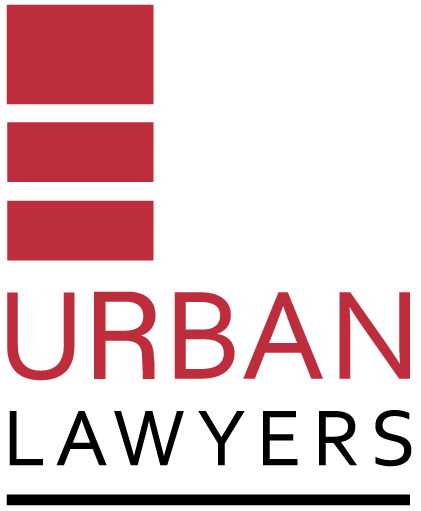Domestic Building Disputes In Victoria Can Now Be Resolved Through A Faster And More Cost-Effective Process
Introduction
Earlier this year an independent government agency called Domestic Building Dispute Resolution Victoria (DBDRV) was set up to help parties resolve domestic building disputes.
The DBDRV deals with disputes between building owners and builders and in some instances architects and sub-contractors.
The approach of the DBDRV is conciliatory in nature and has been established to provide consumer protection to parties involved in domestic building disputes and to deliver a faster and more cost-effective dispute resolution process for smaller disputes.
A dispute can be referred to the DBDRV only after the parties have attempted but failed to resolve the issues in dispute between them.
Which disputes can be referred to the DBDRV?
All disputes referred to the DBDRV must include a building owner.
The DBDRV has jurisdiction in relation to the following types of disputes:
Disputes regarding defective or incomplete building work;
Disputes regarding alterations and renovations;
Disputes regarding extensions;
Disputes regarding associated building works such as garages, driveways, and swimming pools;
Disputes regarding demolition works;
Disputes regarding delays; and
Disputes regarding issues with payment.
Which disputes are excluded from the DBDRV?
The following disputes cannot be referred to the DBDRV:
Disputes that are already before the Victorian Civil and Administrative Tribunal (VCAT); and
Disputes regarding building work that is more than 10 years old.
Who oversees the process at the DBDRV?
Each dispute is allocated to a Dispute Resolution Officer (DRO). All DRO’s are qualified and experienced conciliators. DRO’s manage each dispute from beginning to end. That is, from the initial assessment through to the conciliation itself and through to its conclusion.
In addition, in house building experts, known as Building Assessors are allocated to cases. The Building Assessors are qualified building practitioners that are registered under the Building Act 1993 or qualified architects registered under the Architects Act 1991. The Building Assessors must report contraventions of the Building Act 1993 or the regulations under that Act to the Victorian Building Authority.
Can a party avoid the DBDRV and go straight to VCAT?
From 26 April 2017, a party must attempt to settle a dispute by going through the conciliation process offered by the DBDRV. A party cannot apply to VCAT unless it has completed this process.
An exception to this is where injunctive relief is required to:
Immediately stop the other party from doing something; or
Immediately make the other party do something.
A DRO may determine pursuant to section 45C (3) of the Domestic Building Contracts Act 1995 that a dispute is not suitable for conciliation. For example, where the claim is considered to be vexatious or frivolous. In those circumstances the parties will be provided with a document entitled “Certificate of Conciliation – Dispute Not Suitable”. This will allow the parties to proceed to file an application directly with VCAT.
How is the conciliation process conducted?
Once an application has been accepted by the DBDRV the parties are required to attend a conciliation, which is facilitated by a DRO. The parties may be required to provide certain documents such as the building contract, plans and specifications, engineering drawings, variation requests and all relevant correspondence and emails prior to the conciliation. If a party fails to attend the scheduled conciliation then the DRO can order the following in a party’s absence:
Appoint a Building Assessor to conduct an assessment of the work in dispute; or
Issue a dispute resolution order; or
Issue a certificate stating that the dispute is not suitable for conciliation.
If agreement is reached at the conciliation then the agreement is recorded in a “Record of Agreement” which is signed by both parties.
If the parties are close to reaching an agreement however more time is required then a further conciliation conference may be scheduled.
If the parties fail to resolve their dispute fully then the DRO may issue a binding dispute resolution order against one or both of the parties. The order can specify:
That a builder rectify any defective work;
That a builder rectify any damage caused;
That a builder complete certain work;
That a building owner refrain from doing anything that would prevent or restrict the builder from satisfying a term or condition of the domestic building contract; and
That a building owner pay money into the Domestic Building Dispute Resolution Victoria Trust Fund.
The order may also include findings regarding the state of the works. For example, the order may specify that:
The works are not defective or incomplete; or
The works are so defective that it would not be appropriate to allow the builder to rectify or complete the work.
Finally, the DRO may issue the parties with a certificate stating that the dispute has not been resolved. This certificate entitles the parties to then make an application to VCAT.
Conclusion
The DBDRV has been established to provide consumer protection for parties involved in domestic building disputes and to deliver a faster and more cost-effective dispute resolution process for smaller disputes. However, there is a risk that the DBDRV may lead to a duplication of the dispute resolution process which is already available at VCAT and become an expensive hurdle to overcome before building owners and builders can pursue their claim at VCAT.
If you would like further information about DBDRV and how it applies to you or your business, please contact Urban Lawyers.

